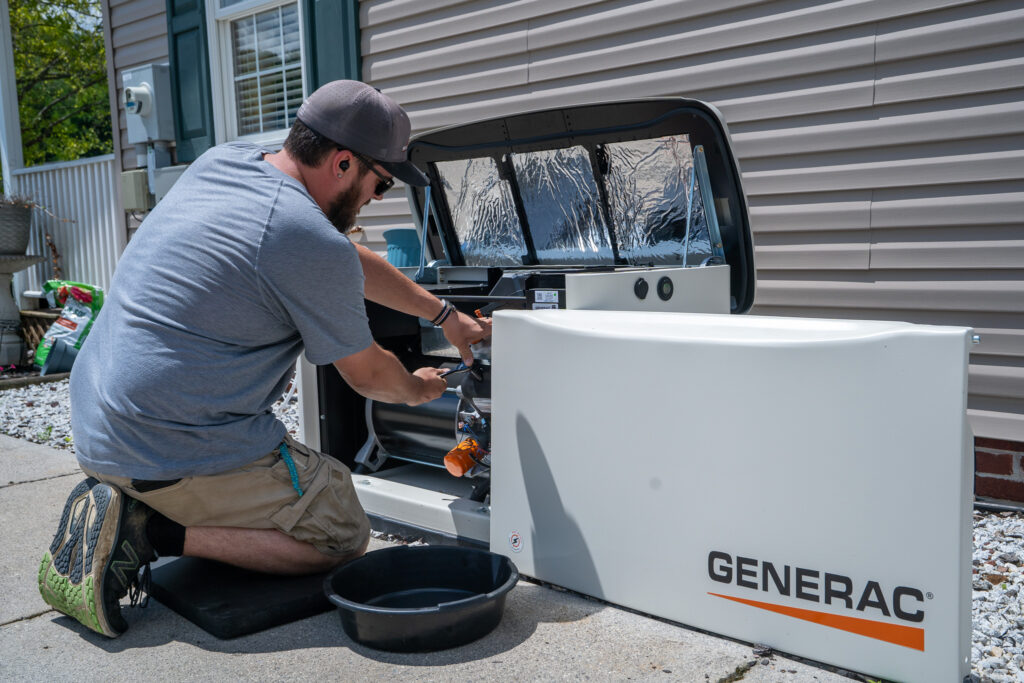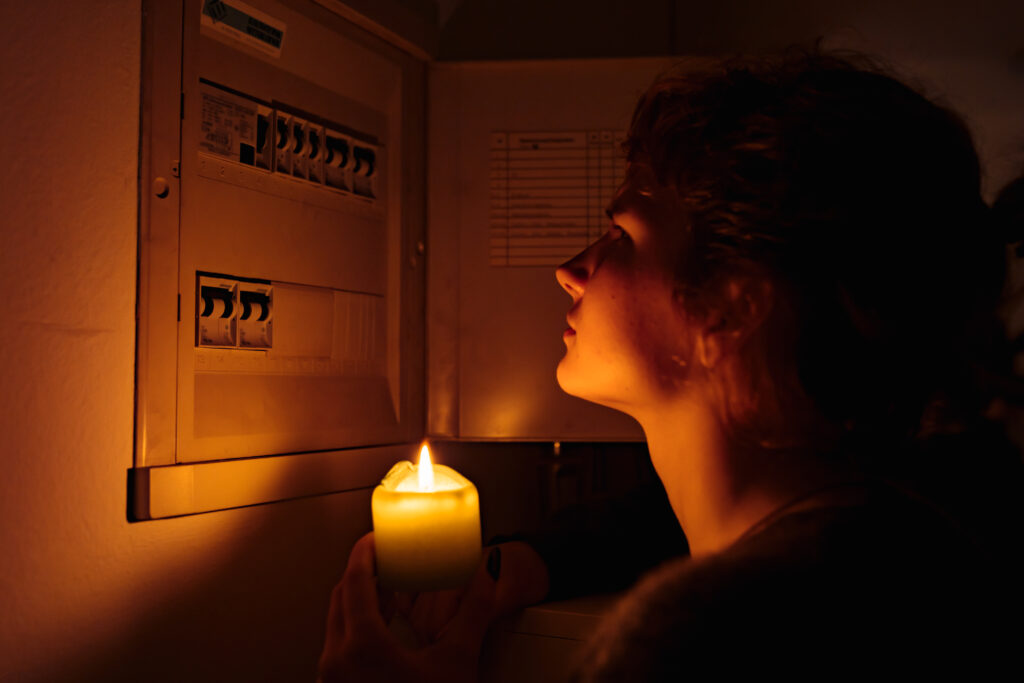A home is more than just a building; it is a place of comfort, security, and stability. In Southwest Virginia, where the rugged beauty of the mountains is matched only by the unpredictability of the weather, maintaining that stability can be a challenge. Ice storms in the winter and severe thunderstorms in the summer can threaten the power grid, leaving homes in the dark and without essential comforts. An automatic standby generator is a powerful solution to this problem, a permanent piece of equipment designed to provide seamless, reliable power the moment an outage occurs. It offers a profound sense of security that your family’s comfort and safety will not be disrupted.
For many homeowners, however, the technology can seem complex and intimidating. How does it know when to turn on? What can it actually power? What makes it different from a portable unit? The purpose of the following information is to demystify this technology completely. We will break down exactly how an automatic standby generator works, the role of its key components, and what you should consider when deciding if one is right for your home. We believe that understanding how this system protects your home is the first step toward the true peace of mind it provides.
What Is an Automatic Standby Generator?
At its core, an automatic standby generator is a permanent power solution for your home or business. Think of it less like a temporary tool and more like a major appliance, similar to a central air conditioning unit. It is professionally installed on a concrete pad outside your home and is directly connected to your home’s electrical system. Unlike a portable generator that requires you to manually set it up and run extension cords, a standby unit is always connected and always ready. It operates automatically, meaning you do not have to do anything when the power goes out.

Here in Southwest Virginia, you will commonly see trusted brands like Generac protecting local homes and businesses. These systems are designed for durability and reliability, built to withstand the elements and perform when they are needed most. They are connected to a stable fuel source, typically your home’s existing natural gas line or a dedicated liquid propane tank. This eliminates the need to store gasoline, which can go bad over time, and removes the dangerous and inconvenient task of refueling a machine in the middle of a storm.
The most significant difference between a standby generator and a portable one lies in its convenience, power, and safety. A portable generator requires you to pull it out of storage, find a safe place to run it, fuel it up, and then run multiple extension cords into your home to power a few selected items. An automatic standby generator, on the other hand, handles the entire process for you in seconds, whether you are home, asleep, or away on vacation. It can be sized to power your entire home, not just a handful of appliances. Most importantly, its permanent, professional installation eliminates the primary danger associated with portable units: carbon monoxide poisoning. Because it is placed a safe distance from the home and properly vented, you never have to worry about deadly exhaust fumes entering your living space.
How Does a Standby Generator Work?
The magic of an automatic standby generator lies in its ability to detect a power outage and respond instantly without any human intervention. This seamless transition is orchestrated by a brilliant piece of engineering called the Automatic Transfer Switch, or ATS. The ATS is the true brain of the entire system. It is a smart panel that our licensed electricians install next to your main electrical circuit breaker panel. Its one and only job is to constantly monitor the flow of electricity coming from the utility company.
The moment a power outage occurs and the ATS detects that utility power has been cut, it springs into action. The first step is to immediately and safely isolate your home’s electrical panel from the external power grid. This is a critical safety feature that prevents your generator from sending electricity back down the utility lines, which could endanger line workers trying to make repairs. Simultaneously, the ATS sends a signal to the standby generator unit located outside your home. The generator’s engine then starts up automatically and gets to its proper operating speed, a process that typically takes only about ten to fifteen seconds.
Once the generator is running smoothly and producing a stable, clean source of electricity, the ATS performs its second major task. It opens the connection to the generator and closes the circuit to your home’s electrical panel. Power is instantly restored to the circuits in your home that are wired to the system. This entire, elegantly simple sequence happens in under thirty seconds, often so quickly that you might only notice a brief flicker of the lights. The system manages itself completely.

The process works just as smoothly in reverse. The ATS never stops monitoring the utility line. When it senses that reliable power from the grid has been restored, it allows a brief period to pass to ensure the power is stable and not just flickering on and off. Then, it seamlessly transfers your home’s electrical load back to the utility line and disconnects the generator. The generator does not shut off immediately; it will run a cool-down cycle for a minute or two to ensure the engine is properly cared for. Finally, it will shut itself down and return to standby mode, ready and waiting for the next time it is needed.
What Can a Standby Generator Power?
A common question from homeowners is what exactly a generator can run during an outage. The answer depends entirely on the size of the generator, which is measured in kilowatts (kW), and how the system is integrated with your home’s electrical panel. There are two primary approaches to powering a home, each with its own benefits.
The first option is an essential circuit setup. In this configuration, a smaller generator is installed and the Automatic Transfer Switch is wired to power only the circuits you deem most critical. For most homeowners in our region, these essentials include the furnace or HVAC blower fan to provide heat in the winter, the refrigerator and freezer to protect your food, the well pump if you are not on city water, and a selection of lights and outlets for basic comfort and communication. This approach is a more budget friendly way to ensure your family’s core needs for safety and comfort are met during an outage without the expense of a larger unit.
The second option is a whole-home power solution. This involves installing a larger kilowatt generator that has the capacity to run virtually everything in your home simultaneously, just as if the grid were still active. The transfer switch is integrated with your entire electrical panel, so when the power goes out, your life continues without interruption. You can run your central air conditioning, watch television, cook on your electric stove, and do laundry. For homeowners who want ultimate peace of mind and zero compromises on their lifestyle, or for those who run a business from home, a whole-home system is the ideal solution. Determining the correct size generator, whether for essential circuits or whole-home power, requires a professional load calculation to analyze your home’s specific electrical demands.
Basic Maintenance to Keep It Running
An automatic standby generator is a complex piece of machinery with a mechanical engine at its core. Just like the engine in your car, it requires routine maintenance to ensure it operates reliably and effectively, especially when you need it most. Neglecting maintenance is the single biggest reason a generator might fail to perform during an actual power outage. Investing in regular upkeep is an investment in the reliability of the system.

Many of the most important maintenance tasks are best left to a trained professional. This includes changing the engine oil and oil filter annually, replacing the air filter to ensure proper combustion, checking and replacing the spark plugs for efficient ignition, and most critically, testing the health of the battery. A weak or dead battery is the number one cause of a generator failing to start during an outage. A professional technician can perform a load test on the battery to ensure it has the cranking power needed to start the engine in any weather.
Fortunately, modern Generac units are designed to help with their own upkeep. They perform a weekly self test, often called an exercise cycle, where the engine will start and run for about five to ten minutes without transferring power to the house. This brief run time circulates the oil, keeps the engine parts lubricated, and helps keep the battery charged, ensuring the machine is ready to go at a moment’s notice. At SWVA Mechanical, we offer comprehensive annual service plans where our certified technicians will perform all these essential tasks and more, giving you complete confidence that your generator is in peak condition before the next storm season arrives.
Is a Standby Generator Right for You?
The decision to install a standby generator is a personal one, but certain homeowners benefit more than others. If you live in a rural or remote part of Southwest Virginia where power outages tend to last longer due to challenging terrain for utility crews, a generator can shift from a convenience to a necessity. Families with members who rely on electrically powered medical equipment find that a generator provides a level of safety that is simply invaluable. In today’s world, with more people working from home than ever before, a generator can mean the difference between a productive workday and a frustrating loss of income.
The installation process is a professional trade that involves several key steps. Our team at SWVA Mechanical begins with a thorough consultation and site assessment to determine the best location for the unit and to perform a proper load calculation. We then prepare a sturdy concrete pad for the generator to sit on. The unit is then connected to its fuel source, either by tapping into your home’s natural gas line or connecting to a dedicated propane tank. Finally, our electricians install the Automatic Transfer Switch and make all the necessary connections to your home’s electrical system. The entire process is handled professionally and in accordance with all local codes.
We understand that a generator is a significant investment in your home. To make this crucial upgrade more accessible, flexible financing options are often available, allowing you to get the protection you need with manageable monthly payments. These systems are also backed by robust manufacturer warranties from brands like Generac, which are then supported by our own workmanship warranty on the quality of our installation.
An automatic standby generator is far more than just a piece of equipment; it is a permanent investment in your family’s safety, your home’s security, and your personal peace of mind. It transforms the experience of a power outage from one of stress, uncertainty, and inconvenience into a minor, non-disruptive event. Knowing that your heat will stay on, your food will stay fresh, your water will keep running, and your home will remain a safe haven, regardless of the weather outside, is a truly empowering feeling. It is about removing the unpredictability that comes with every storm warning that rolls across our mountains.

If you are tired of the disruption and anxiety that power outages bring, it may be time to consider a permanent solution. We invite you to contact our team at SWVA Mechanical to learn more about how a Generac automatic standby generator can benefit your home. We would be happy to provide a free, no-obligation consultation to assess your specific needs, answer all of your questions, and design a system that is perfect for you.
